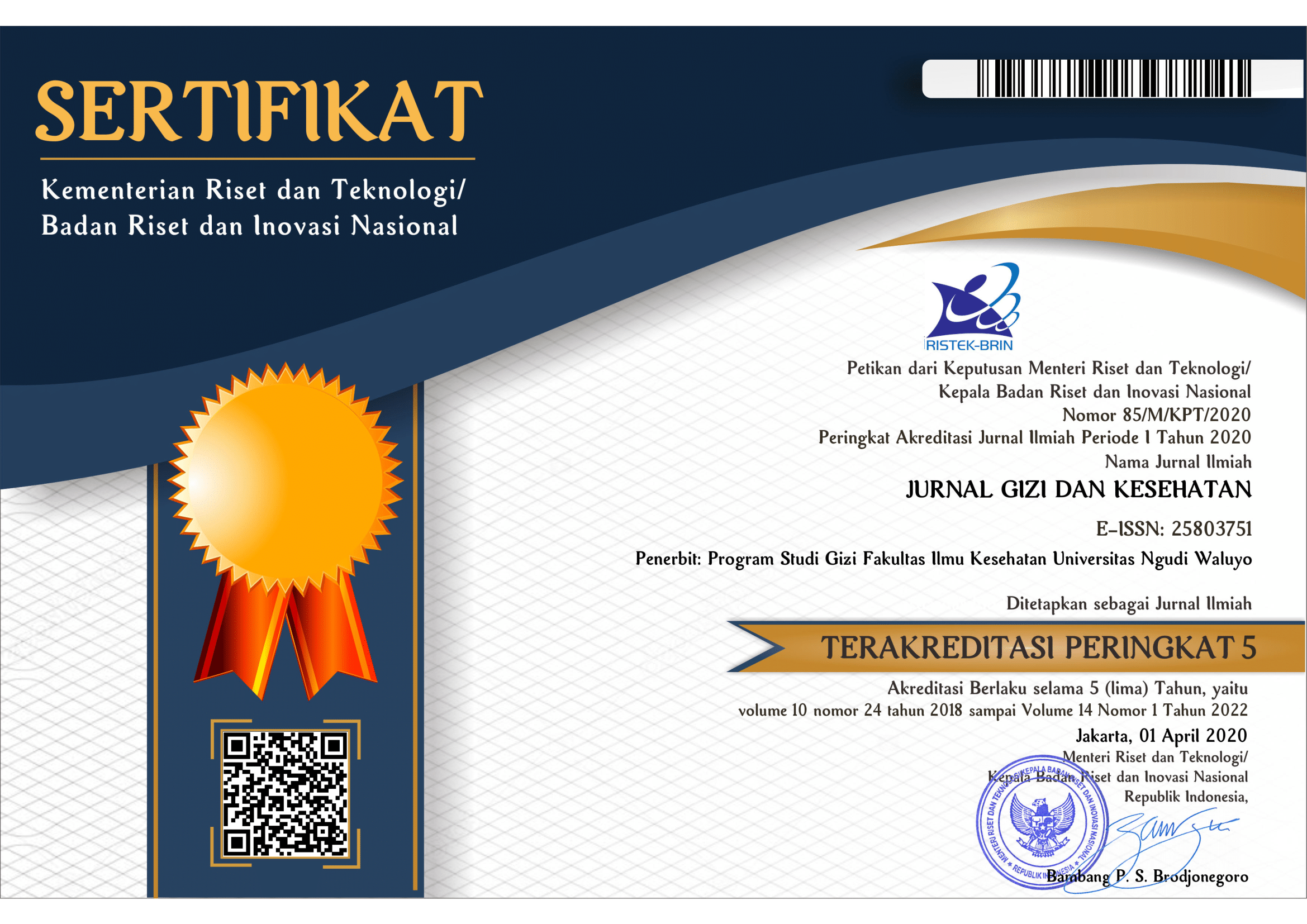The Effect Of Fermentation On Nutrition Content (Protein, Fat, Carbohydrate And Fiber) In Processed Red Beans (Phaseolus Vulgaris L.)
DOI:
https://doi.org/10.35473/jgk.v13i1.105Keywords:
Red beans, tempeh, fermentation, nutritional contentAbstract
Red bean tempeh is a processed product from nuts which is formed by the help of Rhizopus sp, mold through a fermentation process. One of the uses of red bean production through the boiling and fermentation process is an effort to increase the variety of red bean processing to increase the nutritional value of kidney beans. Purpose To determine the nutritional content and analysis of nutritional content in boiled red beans and red bean tempeh. This study was a pre experimental design. With a completely randomized design approach. The research carried out is by making preparations in the form of boiled red beans and red bean tempeh and then tested for nutritional content. The analysis test for protein content used the kjedahl method, the fat content used the Soxhlet method, the carbohydrate content used the anthrone method, and the fiber content used the reflux method. Statistical analysis of different tests was performed using the independent t test, with data distribution normally distributed. The average yield of nutrient content in boiled red beans was 18.77% protein, 4.03% fat, 27.40% carbohydrates, and 18.25% fiber. The nutritional content of red bean tempeh is 12.26% protein, 3.96% fat, 34.75% highest carbohydrate, and 22.10% fiber. The most significant test results were the carbohydrate content (p = 0.001) and the protein content (p = 0.021). Fat (p = 0.965) and fiber (p = 0.399) content showed no significant difference. There are differences in the nutritional content of boiled red beans and red bean tempeh, namely in the carbohydrate content and protein content, which shows a significant difference (p <0.05).
Downloads
References
Asngad, Suparti, Laksono P.B. (2011). Uji Kadar Serat, Karbohidrat, Dan Sifat Organoleptik Pada Pembuatan Tempe Dari Bahan Dasar Kacang Merah (Vigna Umbellate) Dengan Penambahan Bekatul. Jurnal Penelitian Sains & Teknologi; 11(1): 13–36.
Astawan, M. (2009).Sehat Dengan Hidangan Kacang Dan Biji-Bijian. Jakarta: Penebar Swadaya.
Astuti, Mary, Andreanyta Meliala, Fabien S. Dalais dan Mark L Wahlqvist. (2000). Review Article: Tempe, a Nutritious and Healty Food from Indonesia. Aisa Pasific J Clin Nutr; 9 (4):322-325.
BadanPusatStatistik. (2015). Statistik Produksi Hortikultura Tahun 2014. Kementrian Pertanian Direktorat Jenderal Hortikultura. http://hortikultura.pertanian.go.id/wp-content/uploads/2016/02/Statistik-Produksi-2014.pdf.
Dewi, L., S. P Hastuti., dan R. Kumalasari. (2013). Pengaruh Konsentrasi Inokulum Terhadap Kualitas Tempe Kedelai (Glycine Max (L). Merr) var. Grobogan. Prosiding Seminar Nasional ke-22 Perhimpunan Biologi Indonesia. Jawa Tengah.
Diana, N.E. (2016). Pengaruh Waktu Perebusan Terhadap Kandungan Proksimat, Mineral dan Kadar Gosipol Tepung Biji Kapas. Jurnal Penelitian Pascapanen Pertanian; 13(1): 100-107.
Dwidjoseputro D. 1978. Dasar-dasar Mikrobiologi. Djambatan, Jakarta.
Karisma, V.W. (2014). Pengaruh Penepungan, Perebusan, Perendaman Asam, Dan Fermentasi Terhadap Komposisi Kimia Kacang Merah (Phaseolus Vulgaris L.). [Skripsi]: Jurusan Ilmu Dan Teknologi Pangan Fakultas Teknologi Pertanian Institut Pertanian Bogor.
Messina. (2014). Nutrition And Health Benefit Of Dried Bean. Am J Clin Nutr; 1(3): 1-6. https://doi.org/10.3945/ajcn.113.071471.
Moniharapon E, Sandra J,dan Dina L. (2017). Karakterisasi Sifat Kimia Tepung Kacang Lawa Merah (phaseolus vulgaris L.) Dengan Beberapa Perlakuan Pendahuluan. Jurnal Teknologi Pertanian; 6(1): 2-11. https://doi.org/10.30598/jagritekno.2017.6.1.21.
Ruben E, Ni Wayan W, I Desak P. (2015). Studi Sifat Fisik Kimia dan Fungsional Tepung Kacang Merah dan Tepung Tempe Kacang Merah (phaseolus vulgaris L.). Jurnal Teknologi Pangan dan Pertanian; 4(2): 1-9.
Wang, H. L. (1984). Tofu and Tempeh as Potential Protein Sources in the
Western Diet. Journal of the American Oil Chemists’ Society; 61(3): 528-534.
Wicaksono Alexander T.(2014). Pengaruh Ketebalan dan Persen Aerasi Kemasan Terhadap Sifat Fisikokimia Tempe Grits Kacang Merah (phaseolus Vulgaris L.). [Skripsi]: Fakultas Teknologi Pertanian Institut Pertanian Bogor.










